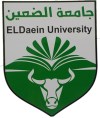About - ELDaein City

Learn about El Daein City, the capital of East Darfur and home to El Daein University, and discover its role in education, development, and community service.
- University High Administration
- About the University
- University Vision & Mission
- University Council
- University Senate
- The Vice-Chancellor's address
- Organizational Structure
- University Projects
- About Darfur Region
- About ELDaein City

Overview
- El Daein City is the capital of East Darfur State, located in southwestern Sudan, about 831 km from Khartoum.
Its population is approximately 300,000 people, and it serves as a commercial center for grains and livestock.
The city is likely experiencing current conflicts, having been seized by the Rapid Support Forces (RSF) in November 2023, with reports of shelling in January 2024.
Historically, the city has witnessed conflicts with neighboring tribes, including a massacre in 1987.
Location and Geography
El Daein is situated in southwestern Sudan and is the capital of East Darfur State, established in January 2012. It is about 831 km from Khartoum, 157.4 km from Nyala (the capital of South Darfur), and 180.6 km from Al-Mujlad in South Kordofan. It is located at coordinates 11°27′39″N 26°7′42″E, at an elevation of 449 meters (1,476 feet), and features diverse terrain including sandy plains and seasonal valleys.
Population and Economy
The population of El Daein is about 300,000 (recent estimates), while the 2006 census recorded around 264,734 people. The city is home to a mix of Arab and African tribes, including the Rizeigat tribe which founded it. It is an important commercial hub for grain trade such as wheat, peanuts, and barley, as well as livestock. The city is connected by railway to Khartoum and Nyala, and it has El Daein International Airport (IATA code: ADV).
History and Current Situation
El Daein was founded in the 18th and 19th centuries by the Rizeigat tribe and has a history of conflicts with neighboring tribes such as the Fur and Dinka. A notable historical event is the massacre in March 1987, which resulted in the death of more than 1,000 Dinka tribe members.
Currently, the city appears to be facing ongoing conflict, having been seized by the Rapid Support Forces (RSF) on November 22, 2023, as part of the Sudanese civil war. Reports indicate shelling by the Sudanese Armed Forces (SAF) on January 26, 2024, with a severe humanitarian crisis and displacement of over 10.7 million people.
Population and Social Composition
El Daein has an estimated population of around 300,000 according to recent estimates, while the 2006 census recorded about 264,734 people. The city is ethnically and culturally diverse, inhabited by Arab tribes such as the Rizeigat, who founded the city, alongside other African tribes. Arabic is the main language, with local languages such as Daju and Fur also spoken. Islam is the predominant religion, and most residents live in urban and surrounding rural areas.
History
El Daein was founded in the 18th and 19th centuries by Barshim bin Abdul Hamid and the Rizeigat tribe, a large Arab nomadic tribe. The city has a history of conflicts with neighboring tribes such as the Fur in western Sudan and the Dinka in the south. A notable historical event is the ethnic massacre on March 27-28, 1987, where the Rizeigat tribe killed more than 1,000 members of the Dinka tribe, sparking widespread human rights controversy in the region.
